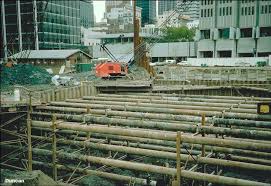يوليو . 27, 2024 21:56 Back to list
Leading Manufacturer of Innovative Pipe Scaffolding Solutions for Construction Projects Worldwide
Pipe Scaffolding Manufacturer Essential Insights into the Industry
In construction and industrial sectors, providing safe and reliable access to workspaces is a paramount concern. Pipe scaffolding has emerged as a critical component in these fields, offering strength, flexibility, and longevity. Understanding the role and significance of a pipe scaffolding manufacturer is essential for project managers, contractors, and safety officers who are committed to ensuring operational efficiency while maintaining safety standards.
The Importance of Pipe Scaffolding
Pipe scaffolding, composed primarily of steel pipes, offers a robust structure that supports workers and materials during construction or maintenance tasks. Its design allows for easy assembly and disassembly, which is advantageous for projects with tight timelines or changing requirements. Unlike traditional wooden scaffolding, pipe scaffolding minimizes the risk of accidents by providing a stable, evenly distributed platform.
Safety is a primary concern in the construction industry, and manufacturers of pipe scaffolding have risen to the occasion by adhering to stringent safety regulations and standards. Quality assurance during the manufacturing process is critical, as subpar materials can lead to catastrophic failures. Consequently, reputable manufacturers invest in state-of-the-art technology and rigorous quality control measures to ensure their products meet industry safety standards.
Key Characteristics of Pipe Scaffolding
A reliable pipe scaffolding manufacturer produces scaffolding units that exhibit several key characteristics
1. Durability Steel pipes, often galvanized or treated, are resistant to corrosion and bear heavy loads, making them suitable for various environments, from residential construction to complex industrial projects.
2. Modularity The modular design of pipe scaffolding allows for customization based on specific project needs. Manufacturers typically offer a range of components, including base plates, couplers, and ladders to accommodate different heights and configurations.
3. Ease of Assembly Pipe scaffolding systems are designed for quick assembly, which is crucial for projects that require rapid deployment. Many manufacturers provide comprehensive assembly guidelines and training to ensure the scaffolding is set up safely and efficiently.
pipe scaffolding manufacturer

4. Cost-effectiveness While initial costs may be higher than alternative scaffolding methods, the long-term durability and reusability of pipe scaffolding often make it a more economical choice over time.
The Role of a Pipe Scaffolding Manufacturer
A reputable pipe scaffolding manufacturer plays several important roles
- Design and Development Manufacturers engage in innovative design processes to create scaffolding systems that meet the evolving needs of the construction industry, ensuring their products are not only safe but also efficient.
- Regulatory Compliance Compliance with national and international safety standards is non-negotiable. Manufacturers are responsible for keeping abreast of changes in regulations to ensure that their scaffolding options meet or exceed these requirements.
- Education and Training Many manufacturers offer training programs for construction crews on the proper assembly and use of their scaffolding systems. This not only enhances safety but also fosters a better understanding of the product’s capabilities.
- Customer Support Providing excellent customer service is integral to a manufacturer’s reputation. This includes assisting contractors with technical queries, providing maintenance information, and addressing any safety concerns promptly.
Conclusion
In summary, the role of a pipe scaffolding manufacturer extends far beyond simply supplying materials. They are pivotal in advancing safety standards, enhancing operational efficiency, and ensuring that construction projects can be completed safely and on time. As the construction industry continues to grow and evolve, the demand for high-quality pipe scaffolding will remain steadfast. Selecting the right manufacturer becomes crucial for any construction undertaking, paving the way for successful projects that prioritize safety and excellence.
-
Expert Ringlock Scaffolding: Durable, Safe, Efficient Solutions
NewsAug.28,2025
-
Ringlock Scaffolding: Strong, Safe & Efficient Solutions
NewsAug.27,2025
-
OEM Column Formwork: Circular, Curved & Inclined Solutions
NewsAug.26,2025
-
Premium Scaffolding Jacks: Stable, Adjustable & Durable
NewsAug.25,2025
-
OEM Wall Formwork & Shuttering: Flexible & Curved Solutions
NewsAug.24,2025
-
Adjustable Heavy Duty Props for Slab Formwork | Strong & Reliable Support
NewsAug.23,2025